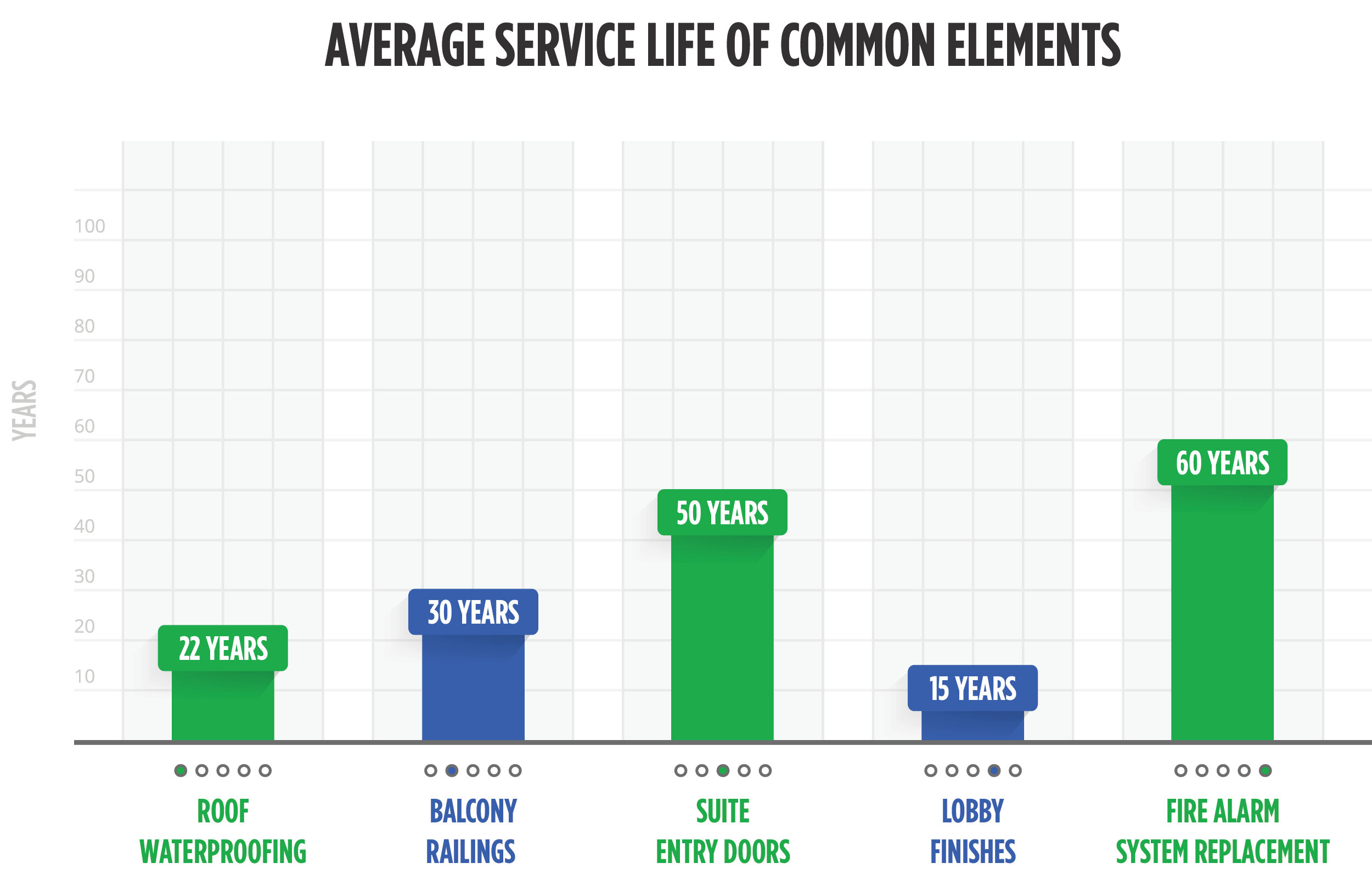A Community in Two Parts
A condominium corporation is fundamentally composed of two parts: units and common elements. The units are what they sound like – the individual units to which each owner holds title. The common elements are owned by all the unit owners together, through the legal structure of the condominium corporation.
Each unit owner is responsible for the maintenance of their own unit. What is part of a unit varies with each corporation, but generally includes their light fixtures, appliances, drywall, paint, furniture, etc.
The condominium corporation is responsible for the maintenance of the common elements. The common elements vary even more so than the units, but some generalities exist. The structural elements (load-bearing walls, foundation), the roof, the parking lot, and hallways are included. Likewise, the major mechanical systems that serve all owners: elevators, heating/cooling, ventilation, air conditioning, fire systems, etc., are all part of the common elements.
The funding for the common elements comes from owner contributions through common element fees.
Saving for the Future
The common elements of a corporation are designed to last for many years, often decades. However, they do occasionally have to be repaired or replaced, and these repairs are expensive. A roof replacement might cost in excess of $100,000, while even small repairs to elevators may be thousands of dollars.
With freehold properties (such as single detached homes), when it is time to replace the shingles on the roof, the owner of the property gets this work done. The one-time cost is usually in the order of several thousand dollars. The owner of the property has a large one-time expenditure, which often causes significant distress in their budget.
A condominium corporation operates differently: instead of having large one-time expenses be paid for by current owners, the Condominium Act requires that a condominium corporation save every year for future expenditures. These savings are put into a “reserve fund” which does what it says: reserves money for future use.
The Reserve Fund and Reserve Fund Study
In order to determine how much needs to be saved each year, the condominium corporation is required to hire a specialist to assess the condition of the corporation’s common elements, this specialist is often an architect or engineer with great experience doing this type of work. When this work is done, the corporation receives a Reserve Fund Study, which specifies when and how much is to be saved and includes inflation-adjusted estimates of expenditures in the future.
However, it is not enough to conduct one Reserve Fund Study and use it for the next 50 years. As the corporation ages, different components are replaced, some of which need to be replaced faster or slower than originally predicted. A Reserve Fund Study is updated every 3 years.
3 Types of Reserve Fund Study
A Class 1 Reserve Fund Study is performed once in the corporation’s life (exceptions apply), in the first year after the corporation is turned over from the builder to the board of directors. This study is deep and detailed. It includes an owner survey and lots of time onsite reviewing the common elements.
A Class 2 Reserve Fund Study is an update of the existing Reserve Fund Study. It includes an onsite inspection. The engineer comes onsite to assess how the common elements are wearing.
A Class 3 Reserve Fund Study is an update of the Reserve Fund Study that does not include an onsite inspection. As with all studies, it requires extensive management involvement, as the engineer does not come on site.
Normally, a Class 1 is completed once, then a Class 3 is completed 3 years later, then a Class 2 is completed 3 years after that. From then on, Class 2 and 3 studies alternate every 3 years.
The Condominium Manager’s Role
It is the Condominium Manager’s role to make sure that the Reserve Fund Study is completed on time, every 3 years. The manager leads the entire process on behalf of the board. An experienced manager is especially important during these processes, as the manager knows which extraordinary items should be flagged to the engineer and has detailed records of the service history of the different common element components.
Written by Michael Trendota*, RCM
Chief Operating Officer of Alwington Communities
Michael is a property management professional with experience operating a diverse set of buildings, including high-rise, low-rise, and townhouse-style. His passion is bringing neighbors together to build exciting and vibrant communities. Michael draws from his own condo board member experience to advise board members on the opportunities and challenges facing their communities. Michael holds a Masters of Business Administration from Queen’s University and is a Certified Property Manager.
* Though written by a qualified and experienced Condominium Manager, this article is not intended as legal advice. Please consult your own experts for advice.





